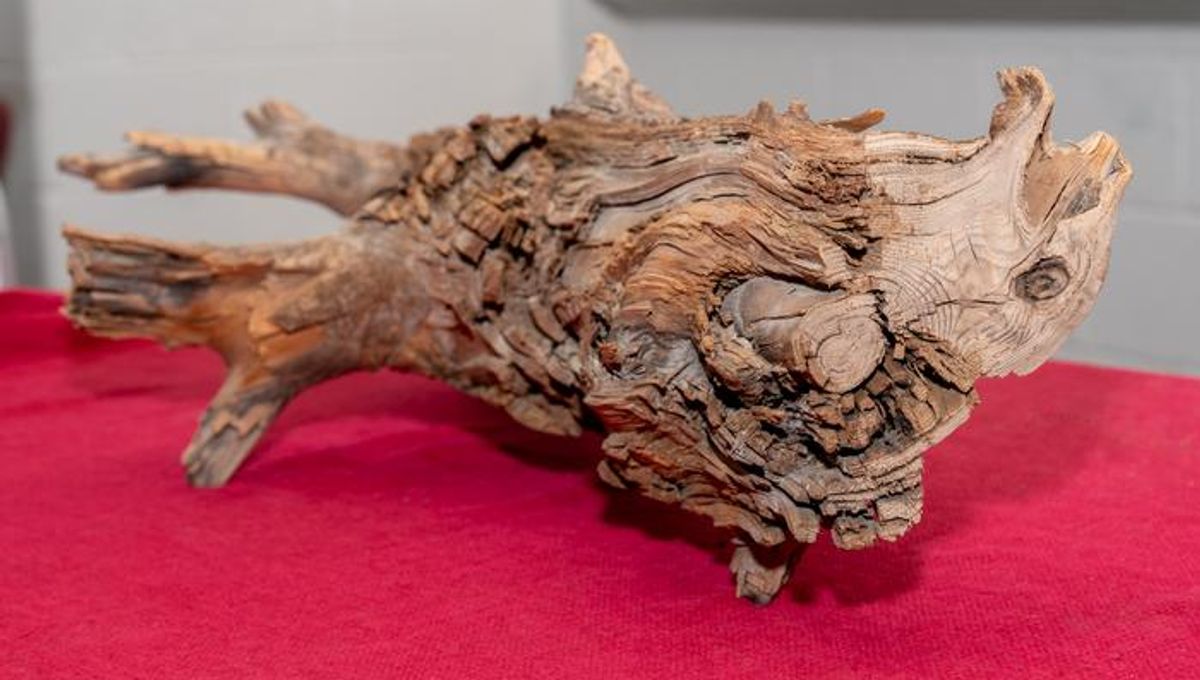
What can an ancient gnarly log tell us about safeguarding the future? According to a new analysis of one 3,775-year-old chunk of tree, potentially quite a bit – thanks to an emerging climate solution known as “wood vaulting”.
We often hear about the importance of trees in the fight against climate change, and that’s for good reason: they actively draw carbon dioxide out of the air for photosynthesis, using it to generate energy or, well, more tree.
The problem comes when the tree dies. Once they become deadwood, they’re not only no longer taking carbon out of the atmosphere – they’re actually releasing it. A lot of it.
“Currently, 8 percent of the carbon stored in forests is stored in dead trees, so not in living trees,” explained forest ecologist Jörg Müller, who was not involved in the new research, in a 2021 episode of the Nature podcast.
As part of a large team analyzing the decomposition of deadwood, Müller had helped reveal the sheer scale of the carbon emissions released by these dead trees – incredibly, more than the amount released by fossil fuels each year. “We found out that the annual release of carbon from deadwood is about 115 percent of the carbon released by humans,” he said. “So, it is a considerable part of the cycle.”
Here’s the question, though: can we do anything about that? Trees may be able to live for hundreds or even thousands of years, but just hoping that they all end up immortal from now on seems short-sighted as a climate solution. An alternative, however, may be to simply… bury it.
Well, that’s probably underselling it, to be fair. You have to bury it in the exact right way – or, as it’s known in carbon capture circles, “vault” it.
“People tend to think, ‘Who doesn’t know how to dig a hole and bury some wood?’” said Ning Zeng, a professor in the University of Maryland’s Department of Atmospheric and Oceanic Science and lead researcher in the new analysis, in a statement.
“But think about how many wooden coffins were buried in human history. How many of them survived?” he pointed out. “For a timescale of hundreds or thousands of years, we need the right conditions.”
And, thanks to the chance discovery back in 2013 of this ancient log – a find that Zeng described as “kind of miraculous” – we now have a better idea of what those conditions should be.
“When the excavator pulled a log out of the ground and threw it over to us, the three ecologists that I had invited from McGill University immediately identified it as Eastern red cedar,” Zeng said. Upon comparison with a freshly cut sample from the same species, the team found that the older log – nearly 4,000 years old, and preserved far longer than should be expected for a lump of cedar – had lost less than 5 percent of the carbon dioxide it once stored.
So, what could have made this remarkably efficient carbon capture possible? The key appears to be in the type of soil covering the log: a clay soil, common to the area of Quebec where the discovery was made, which has especially low permeability. That meant it was able to protect the log from, well, just about anything that might help it decompose – not just insects and fungi, but even the oxygen itself.
And it worked incredibly well. “The wood is nice and solid – you could probably make a piece of furniture out of it,” Zeng said. “You could tell how well it was preserved.”
That’s really good news: because clay soil is pretty common, it means that wood vaulting could potentially become a low-cost way to reduce the amount of greenhouse gases released into the atmosphere each year.
Of course, it’s hardly a solution to the climate crisis on its own – but should the technique be optimized, the researchers reckon we could store up to 10 gigatonnes of CO2 each year using this method. That is, coincidentally, around the amount needed to limit global warming to below 1.5°C (2.7°F) – making this deadwood-burial idea probably worth looking into.
“It’s quite an exciting discovery,” Zeng said. “The urgency of climate change has become such a prominent issue, so there was even more motivation to get this analysis going.”
The paper is published in the journal Science.
Source Link: This Random 3,775-Year-Old Log Might Hold One Secret To Saving The Planet